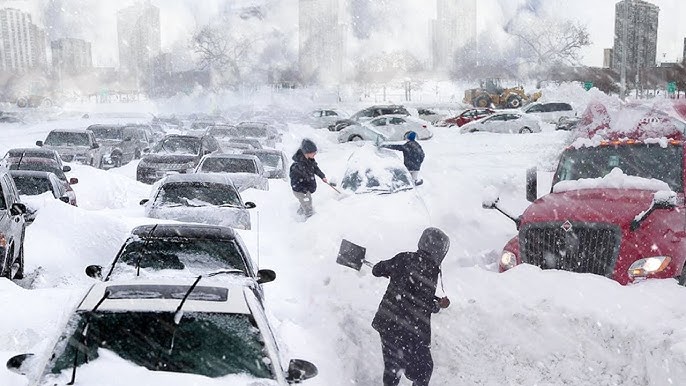
Met Office Warns: More Storms Set to Batter the UK
The UK is in for a wet, windy, and stormy few months, according to the Met Office, which has issued a warning about an increased likelihood of storm clustering—a pattern where multiple storms hit in quick succession.
This forecast is being driven by several major weather factors, including a developing La Niña in the Pacific Ocean, which is influencing global weather patterns, as well as a particularly strong polar vortex over the Arctic.
Meteorologists say that from February to April, the UK and much of western Europe will experience wetter and windier conditions, with frequent westerly winds bringing storm systems across the Atlantic.
Despite the stormy weather, temperatures are expected to stay relatively mild, as the strong polar vortex is helping to keep extremely cold Arctic air from reaching the UK and mainland Europe.
This setup is similar to the winter of 2013-2014, which was recorded as the UK’s wettest winter and possibly one of the stormiest on record.
Adding to the instability, winds in the stratosphere are currently in a westerly phase of a 14-month cycle, further strengthening the Atlantic-driven weather systems.
Met Office meteorologist Jeff Knight has warned that the stormy outlook brings a risk of multiple storms hitting the UK in rapid succession, as reported by The Sun.
“An outlook for increased storminess carries a risk of storm clustering, meaning multiple storms could affect the UK in quick succession, as we have already seen for storms Éowyn and Herminia,” he said.
He further explained the uncertainty surrounding the severity of individual storms but made it clear that the risk of impacts from wet and windy weather—particularly in February and March—was higher than normal.
“Although the outlook can’t give any indication of the severity of specific events and therefore if any particular system will be named, the chance of impacts from wet and windy weather, particularly during February and March, are higher than normal,” Knight added.
The UK has already seen the effects of this volatile weather pattern, with recent storms Éowyn, Ivo, and Herminia causing significant damage.
Storm Éowyn in particular was described by the Met Office as “probably the strongest storm to hit the UK in at least a decade.”
During these recent storms, wind gusts exceeded 100mph, prompting red weather warnings across Scotland and Northern Ireland. Nearly a million properties were left without power as the storms swept through, reinforcing concerns that the coming months could bring more severe weather events.
As the UK prepares for a potentially stormy spring, meteorologists will continue to monitor the evolving weather patterns, urging residents to stay informed and take precautions as needed.
